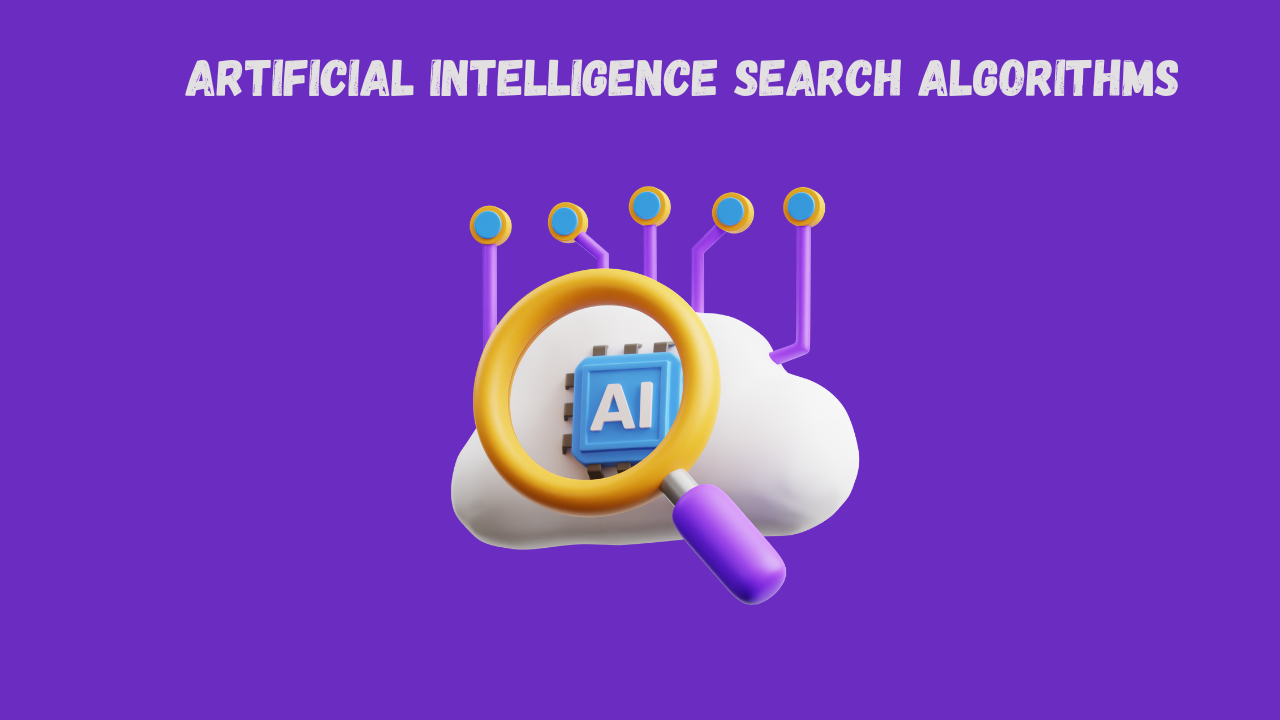Every single day, we ask a computer to find something for us. Whether it’s looking up the fastest route to a new restaurant, finding a specific file on our computer, or simply typing a question into a search engine, we are engaging with a hidden world of problem-solving.
We see the results in an instant, but behind the scenes, a fascinating process is taking place. This process is powered by what we call artificial intelligence search algorithms.
For a long time, computers found things by following a very strict, step-by-step set of rules. It was fast, but not always smart. Artificial intelligence search algorithms are different.
They go beyond simple rules and have the ability to think in a more human-like way, making educated guesses and learning from past experiences to find a solution. The way they work is a cornerstone of modern technology, influencing everything from how we navigate cities to how a video game character finds its way through a virtual world.
This blog is for anyone who has ever wondered how a computer seems to “know” the right answer so quickly. We’re going to take a deep, thoughtful look at the principles behind these intelligent systems, and we’ll do it in a way that’s clear and easy to understand.
We’ll explore the different kinds of artificial intelligence search algorithms, talk about how they work in real-world applications, and consider the human side of this technology.
My hope is that after reading this, you’ll have a new appreciation for the clever thinking that makes our digital world function so well.
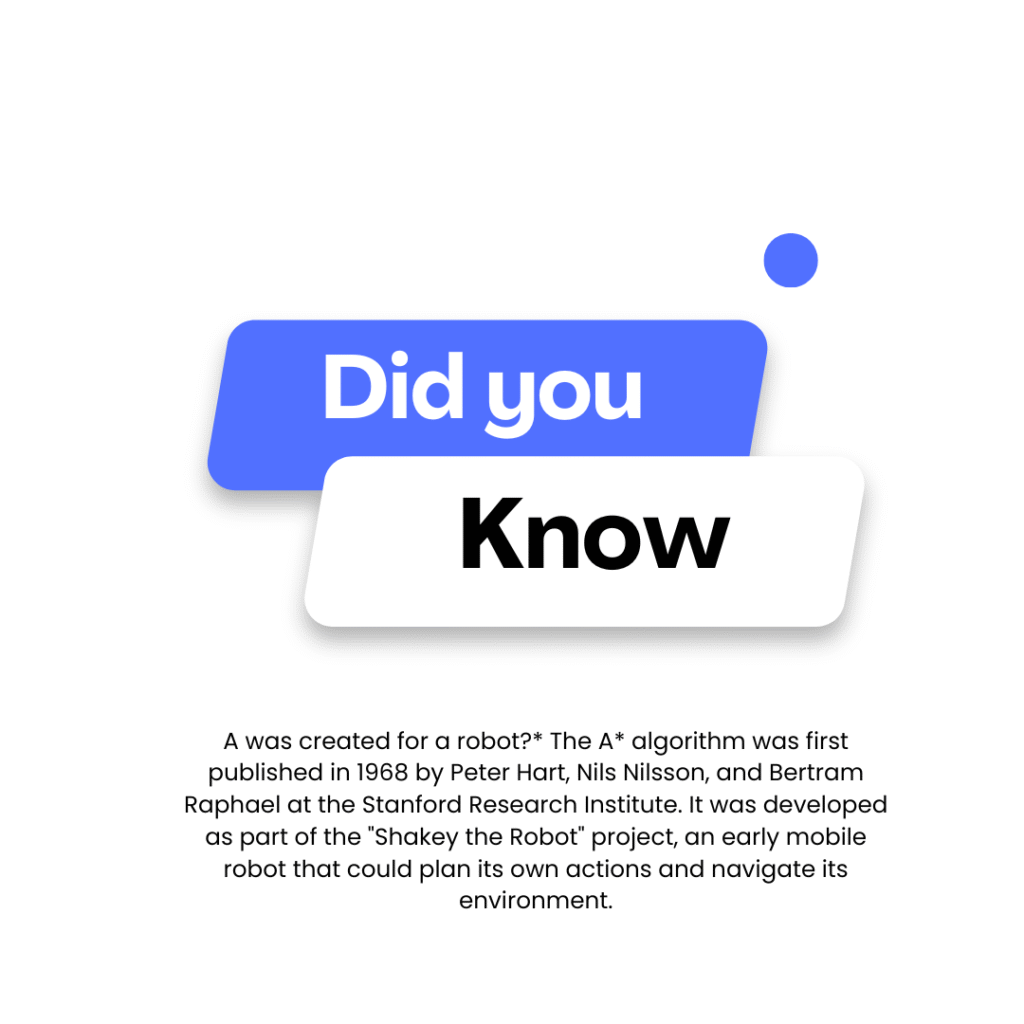
What is an Artificial Intelligence Search Algorithm?
To understand artificial intelligence search algorithms, let’s start with a simple problem: finding a path. Imagine you have a map with different cities connected by roads.
Your goal is to get from City A to City Z. A simple computer program might just try every single road, one by one, until it stumbles upon City Z. This is a very basic kind of search. It will get the job done eventually, but it’s not efficient. It’s a “blind” search.
Now, imagine a human is trying to solve the same problem. They would look at the map and say, “City Z is over there, so I should probably start heading in that general direction.” They use their judgment and knowledge to guide their search. They make an educated guess. This is the core idea of an intelligent search.
“Artificial intelligence search algorithms are computer programs designed to solve problems like this by using a similar kind of intelligent thinking. “
Instead of just trying every possibility, they use information and strategies to guide their search toward a solution. They can find the “best” solution, whether that means the shortest path, the fastest path, or the most relevant result. They are the brains behind a wide range of tasks, from routing a delivery truck to suggesting the perfect movie for you to watch tonight. They are the reason our technology feels less like a simple machine and more like a helpful assistant.
The Foundation: Uninformed Search (The Blind Approach)
Before we can appreciate the more clever artificial intelligence search algorithms, it’s important to understand the basics. These foundational algorithms are called “uninformed” because they operate without any extra knowledge about where the goal might be. They simply follow a set process to check every single possibility. While they are not the most efficient, they guarantee that a solution will be found if one exists.
1. Breadth-First Search (BFS)
Imagine you’re in a maze, and you want to find your way out. You decide to explore by always checking every path right in front of you before you go any deeper. You walk a few steps down one path, then come back and check the path next to it, and so on. You continue this process, checking every path on one level of the maze before moving to the next level of branching paths. This is the idea behind Breadth-First Search.
- How it Works: The algorithm explores all the possibilities at a given depth (or level) before it moves on to the next one. It’s like searching a family tree, checking all the children before looking at any of the grandchildren. It uses a queue to keep track of where it needs to go next.
- When It’s Useful: This kind of search is great when you are looking for the shortest path to a goal, because it will always find the shortest path first. It’s a reliable, methodical approach, even if it might take a while to get through a very wide problem.
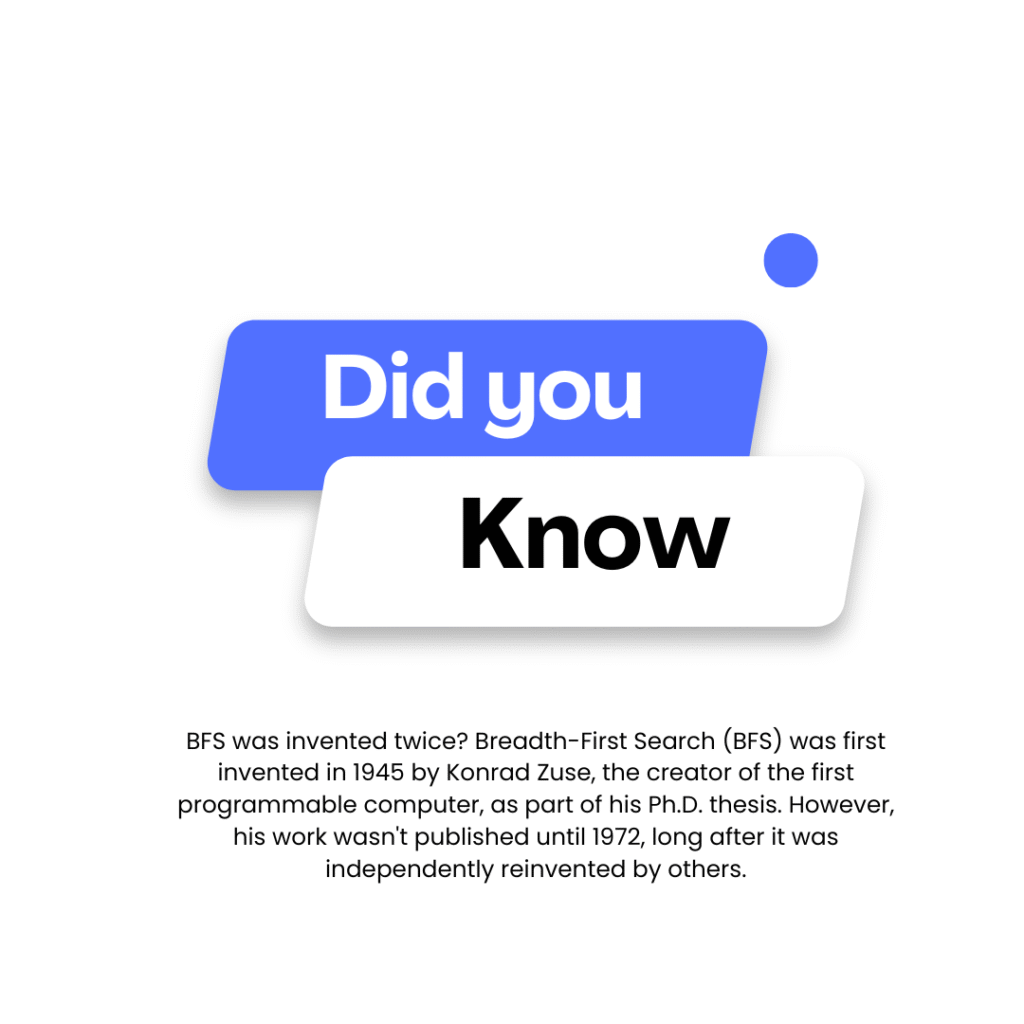
2. Depth-First Search (DFS)
Now, let’s go back to the maze. This time, you decide on a different strategy. You choose a path and follow it as far as you can go. If you hit a dead end, you turn around and backtrack to the last point where you had a choice, and then you try another path from there. This is a much more aggressive approach. This is Depth-First Search.
- How it Works: The algorithm explores as far down a single path as possible. It only backtracks when it hits a dead end or finds the solution. It’s like a person who starts looking for a lost item by checking every corner of one room before moving to the next room. It uses a stack to remember the paths it needs to explore later.
- When It’s Useful: Depth-First Search is very memory-efficient, as it only needs to keep track of the current path it’s on, not all the paths on a particular level. It’s often used for problems where there are many possible paths, and you just need to find one solution, not necessarily the shortest one.
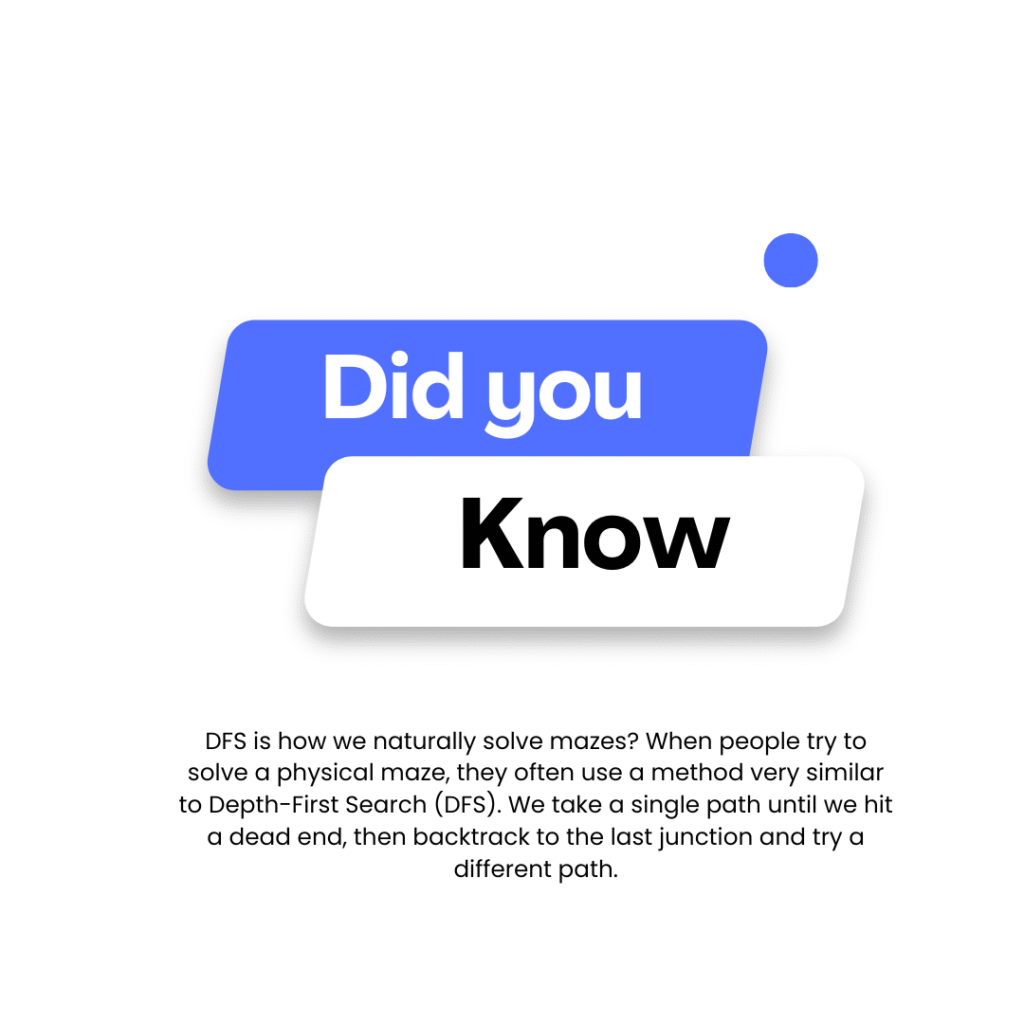
The Brains of the Operation: Informed Search (Heuristic Approach)
The real magic of artificial intelligence search algorithms happens when they are given some extra knowledge, or a “heuristic.” A heuristic is a smart guess or a rule of thumb that helps the algorithm decide which path is most likely to lead to a solution. This is where the “intelligence” comes into play, as the algorithm uses this information to prioritize its search and avoid wasting time on dead ends.
1. Greedy Best-First Search
The name of this algorithm pretty much says it all. It’s “greedy” because at every step, it makes the choice that seems best at that moment, without thinking too far ahead. It looks for the path that gets it closest to the goal, according to its heuristic.
- How it Works: Let’s go back to our map. A greedy search would always choose the road that leads toward the city you’re trying to reach, even if that road is congested with traffic or is a much longer drive in reality. It’s a bit shortsighted, but it can be very fast if its initial guesses are correct.
- When It’s Useful: This is a simple and fast approach for when you need a quick, good-enough solution. It’s not guaranteed to find the best possible path, but it can find a decent one very quickly. It’s like taking the most obvious route on a map without checking for traffic.
2. The A* (A-Star) Search Algorithm
This is arguably one of the most famous and widely used artificial intelligence search algorithms, and for a good reason. It’s a beautifully balanced and powerful tool that combines the best of both worlds. A* is both efficient and guaranteed to find the optimal solution if one exists.
- How it Works: A* doesn’t just make a greedy guess; it makes an informed decision. At every step, it calculates two things:
- The actual cost to get to the current position (for a map, this would be the miles you’ve already driven).
- An estimate of the cost to get from the current position to the goal (this would be the straight-line distance, or “as the crow flies,” to your destination). It then adds these two numbers together to make a judgment call. This combination ensures that the algorithm doesn’t get stuck going down a very short, but ultimately wrong, path. It’s a very intelligent and balanced approach to searching.
- When It’s Useful: A* is the algorithm of choice for many applications. It’s used in video games for character pathfinding, in navigation systems to find the fastest route, and in robotics to help a machine plan its movements in a complex environment. Its ability to find an optimal path efficiently makes it a workhorse of modern AI.
Beyond the Basics: The Role of AI Search in Our World
Now that we’ve talked about the theory, let’s explore how these artificial intelligence search algorithms are put to work in the technology we use every day.
1. Search Engines and Finding Information
When you type a query into a search engine, you’re not just getting a list of every website that contains your keywords. You are getting the results of an incredibly sophisticated algorithm that ranks and presents information based on its relevance, authority, and quality.
These artificial intelligence search algorithms are designed to understand the intent behind your words. They use natural language processing to comprehend the meaning of your question, not just the individual words. They then sort through an unimaginable number of web pages, using a vast collection of metrics to determine which pages are most likely to answer your question. This is a far cry from a simple, uninformed search; it’s an intelligent system making millions of decisions in a fraction of a second to give you the best possible answer.
2. Navigation Apps and Finding Your Way
If you have ever used an app to get directions, you have directly interacted with these algorithms. A simple search might just find the shortest path, but a truly intelligent system takes much more into account.
An app like Google Maps, for example, uses advanced artificial intelligence search algorithms to find the fastest route. It considers real-time information like traffic, road closures, and even accidents. It can quickly find alternative routes if the one you’re on gets slow. This system is a master class in heuristic search, using a combination of static data (road length) and dynamic data (live traffic) to provide a solution that’s always changing and always trying to be the best.
3. Recommendation Engines and Personalization
Why does Netflix always seem to suggest a show you might actually like? Why does Amazon show you products that seem perfectly tailored to your interests? The answer lies in the use of artificial intelligence search algorithms.
These algorithms work by searching through a massive database of content and user data. They find patterns in what you have watched, what you have bought, or what you have clicked on. They then compare your patterns to those of other people. If they find a group of people who have similar tastes to yours, they will search through the content that those people have enjoyed and present it to you as a suggestion. It’s a highly intelligent, data-driven approach to search, and it’s the reason so much of our online experience feels personal and tailored to us.
4. The World of Robotics and Gaming
In the world of robotics, artificial intelligence search algorithms are essential for helping a machine navigate its physical environment. A robot vacuum cleaner uses a form of these algorithms to decide which parts of a room to clean and which to avoid. A self-driving car uses them to plan its route, avoiding obstacles and making safe decisions on the road.
In video games, artificial intelligence search algorithms are what make the non-player characters (NPCs) seem lifelike. The enemies in a game use these algorithms to find the quickest path to your character. These systems are used to make the game feel dynamic and challenging, as the AI characters are constantly making decisions and searching for the best way to accomplish their goals.
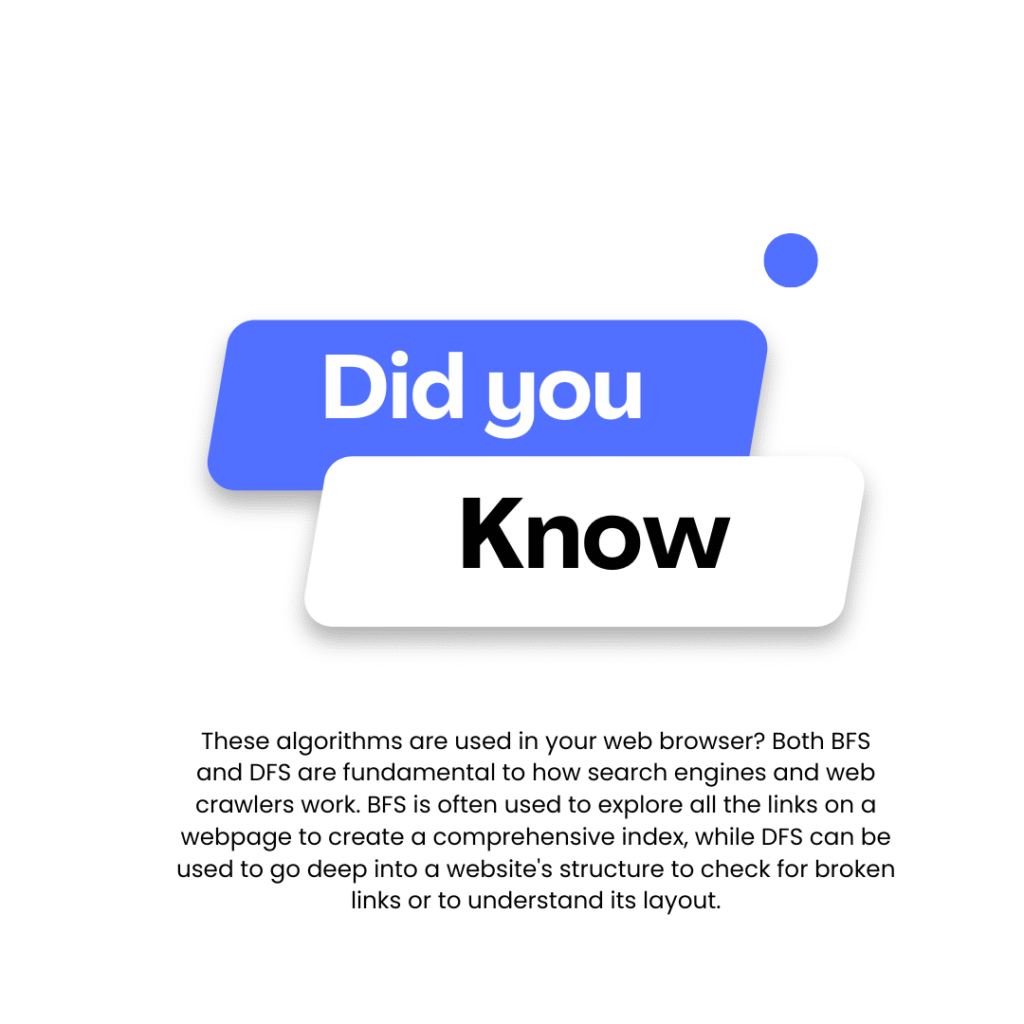
Conclusion
While it’s easy to focus on the technical side of how these systems work, it’s just as important to think about the human element. The results we get from these algorithms have a real impact on our lives. They shape the information we see, the products we buy, and the decisions we make.
One of the most important things to remember is that these algorithms are only as good as the data they were trained on. If the data is biased or incomplete, the results the algorithms produce can also be biased. This is a big area of discussion and research today, and it highlights why human oversight and critical thinking are still so important. We can’t simply accept the answers the algorithms give us; we must also question the data and the reasoning behind them.
The continued development of artificial intelligence search algorithms is changing the way we interact with technology. It’s moving us toward a world where our tools are not just passive machines but intelligent partners in problem-solving. By understanding how they work, we become more thoughtful users and are better equipped to navigate this new and exciting digital landscape. It is this human understanding that will ultimately determine the future of how we utilize these powerful tools.
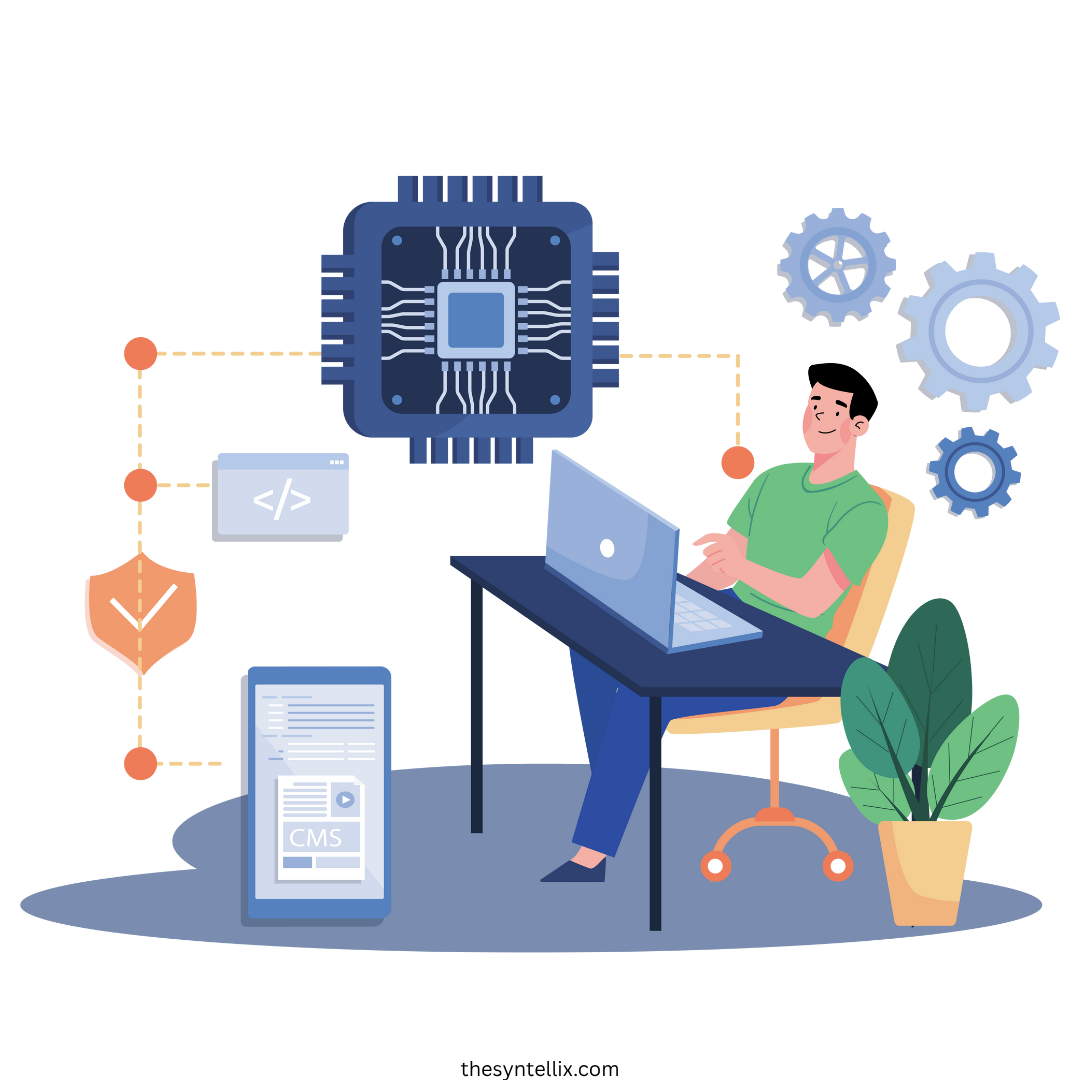
Stay ahead of the curve with the latest insights, tips, and trends in AI, technology, and innovation.

